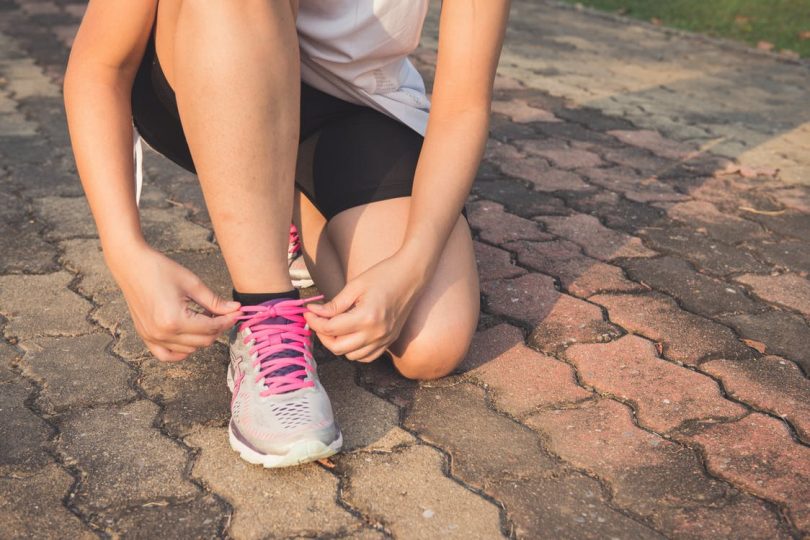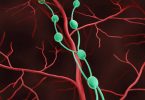Are you someone whose shins start throbbing after you run to make the green light or after a quick jog? It is probably because you have something called shin splints or as doctors refer to it as medial tibial stress syndrome. The main cause of this condition is stress being put on your shin and the connective tissue that connects your muscles to your bones. It gets inflamed, and it is quite painful.
Most common reasons are:
- Weak core muscles, hips or ankles
- Shoes that don’t provide good support or don’t fit well
- Not stretching before and after workouts
- Flat feet
- Not running properly after an injury
What Actually Are Shin Splints?
As we have said before, the pain that is associated with shin springs is because of the excessive amount of force put on the shin bone and tissues that attach the shin bone to the muscle that surrounds it. All that excessive force will cause the muscles to swell and increase the pressure against the bone, which leads to inflammation and lots of pain. They can also be a result of a stress reaction to a bone fracture. The continual beating can cause minor snacks in the bones. If you give your legs time to rest, it will heal, but if you don’t have the time to let your legs heal those small fractures can turn into stress fractures or complete fractures. It is also important that you build your muscles to avoid developing shin splints. That doesn’t need to be anything extreme; it can be something as simple as jumping on a trampoline.

Image: Pexels.com
Who Is At Risk For Having Shin Splints?
There are a ton of physical attributes and different activities that can cause you to get shin splints.
Some of the factors are:
- Running downhill
- Running on uneven terrain
- Lack of flexibility
- Flat foot syndrome
- Weak thigh and butt muscles
- Sports that have fast starts and stops
It is important that you know that shin splints are more likely to happen when your tendons and leg muscles are tired. People who dance, do athletics, have flat feet or are military recruits are more likely to develop shin splints.
Symptoms of Shin Splints
People who suffer from shin splints will experience some or all of the following symptoms:
- Pain that gets worse during exercise
- Pain around the shin bone
- Muscle pain
- Dull aches in the lower part of the leg
- Numb feet and weakness
If your shins are not responding to your treatment methods or if you are facing some of these problems go to the doctor immediately.
- Visibly swollen shins
- Shins that feel hot
- Pain even when you are resting
- Severe pain because of a fall or accident
Treating shin splints
Home remedies
In not severe cases, they can heal just by taking a break from activities and letting your legs rest. The pain will usually go away in a day or two after you have limited your physical activity. But the suggested downtime is usually around one to two weeks depending on your pain. During the rest time you can do sports and activities but ones that are less likely to cause more harm to your shins. Those spots are usually swimming or walking.
If The Shin Splint is Bone Related
For this, you will need to make sure that you get a proper diagnostic. Stress injuries can very easily become stress fractures which will put you down for a long time. If its bone-related your doctor will have to make sure that you do some form of sports physiotherapy in order to do an activity that doesn’t put pressure on your legs.
If The Shin Splint is Muscular
If your shin splints are muscle-related, then foam rollers will become your best friends. You will want to roll out your calves and shins for a couple of minutes a few times a day to loosen up the fascia. Massages are also amazing for this problem as well as getting shoes with good arch support. With those shoes, you will take away the stress of the muscles, and it will potentially hurt less.
Surgery
Surgery is not that common way of treating shin splints; it is only in extreme cases. Severe cases mean that you are experiencing extreme symptoms for several months without it getting better. This procedure is known as a fasciotomy, and it is basically your doctor making small cuts in the tissue that surround your calf muscles to relieve some pain that is caused by shin splints.
How Can You Prevent Shin Splints?
Some precautionary measures you can take to avoid getting shin splints are:
- Avoid exercising on slanted and uneven terrain
- Increase the intensity of your workouts slowly
- Warm-up and cool down after workouts
- Stretch
- Do not exercise through the pain
- Straighten your muscles correctly
If you are planning to do any intensive exercise, it is important that all of your muscles are strong enough to withhold the pressure that will be put on them. If there has been past trauma on any muscle groups, you should consult with your doctor about what intensity workouts you are able to do. If you are experiencing any kind of pain, you must refrain from any type of intense exercise.








